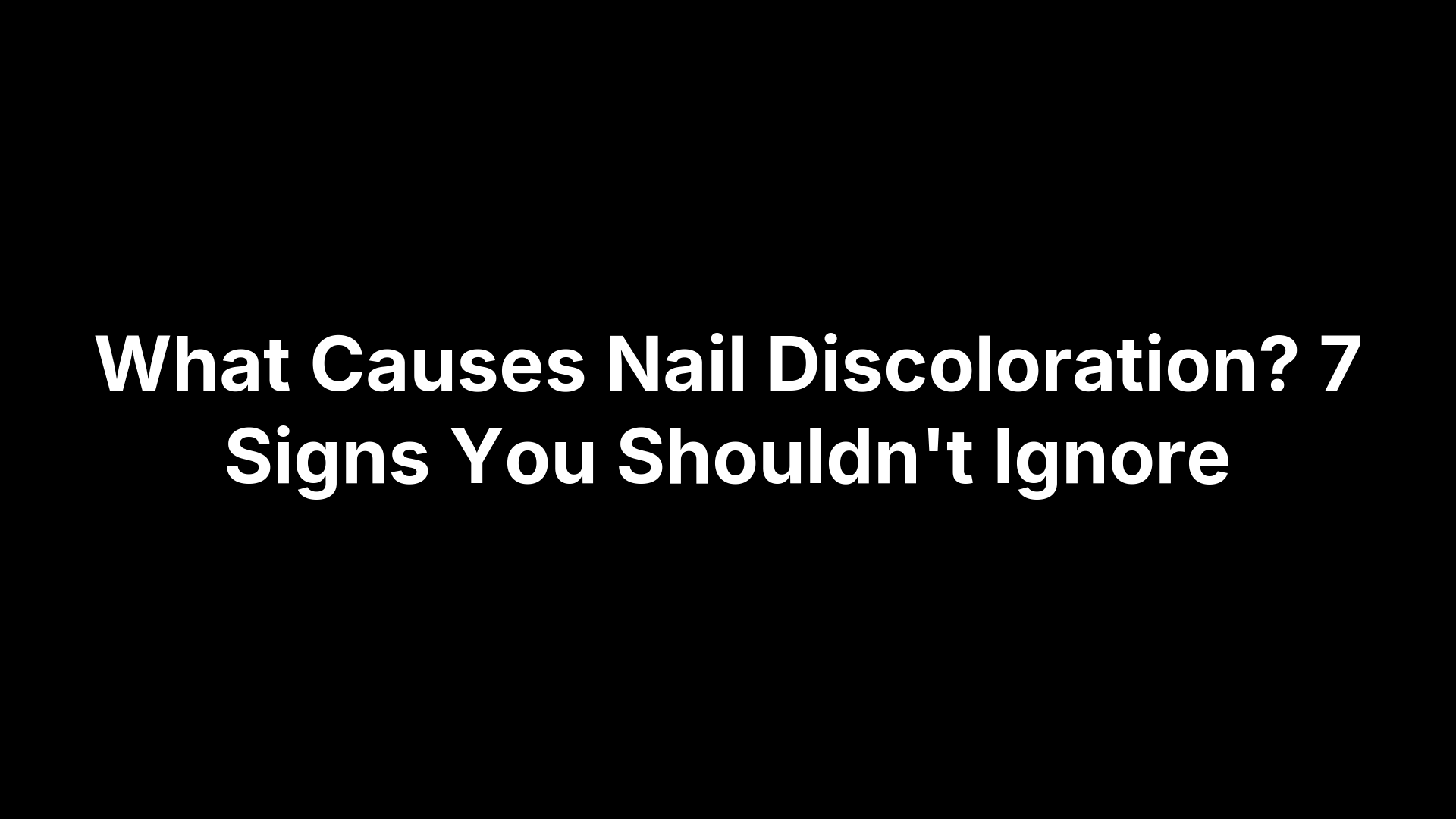Noticing flaky patches, sheets of skin lifting from your soles, or peeling between your toes can be unsettling — and uncomfortable. Sometimes it’s a simple moisture problem from hot showers or tight shoes. Other times, it’s a sign of something that needs targeted treatment, like athlete’s foot, eczema, psoriasis, excessive sweating, or even a diabetes‑related skin issue. Because your feet endure heat, friction, sweat, and long hours in shoes, small problems can snowball quickly, leading to itching, burning, cracking, odor, or pain that makes walking tough.
This guide breaks down 10 common causes of foot skin peeling, what their symptoms look like, and why they trigger peeling in the first place. You’ll get clear, practical steps for what to try at home, when medical treatments make sense, and how to prevent flare‑ups. We’ll also point out red flags that mean it’s time to see a podiatrist for expert care. Ready to figure out what’s behind your peeling feet and how to fix it? Let’s start with when peeling deserves professional attention — then move through each cause, one by one.
1. Achilles Foot and Ankle Center: When peeling feet need podiatry care
Some foot skin peeling causes are simple; others aren’t. If your peeling comes with pain, infection signs, or keeps returning, a podiatry visit can save time, discomfort, and complications. At Achilles Foot and Ankle Center, our team in Central Virginia evaluates the root cause and builds a plan that actually works — from conservative care to advanced wound management.
What it is
A focused foot-and-ankle evaluation that identifies whether peeling is infectious, inflammatory, mechanical (friction/pressure), sweat‑related, or tied to conditions like diabetes. Expect a history, shoe/sock review, skin and nail exam, and, when needed, quick in‑office tests.
Typical symptoms
When patterns point beyond “just dry skin,” it’s worth an expert look.
- Itchy, burning scaling between toes or along the sides of the feet
- Thick, “moccasin-like” dryness with painful heel cracks and fissures
- Blisters, odor, or nail changes; in diabetes, slow-healing sores or numbness
Why it causes peeling
Moisture and friction weaken the skin barrier; infections and inflammation accelerate shedding; poor circulation or nerve issues slow repair — together, they drive persistent peeling.
Try this at home
You can calm mild peeling while you arrange care.
- Clean and dry daily; moisturize with fragrance‑free cream or ointment at bedtime (cotton socks on)
- Use an OTC antifungal for itchy, scaly areas between toes
- Swap damp socks/shoes; choose breathable footwear and rotate pairs
Medical treatments
Your plan is tailored to the cause.
- Targeted prescriptions: topical/oral antifungals; short‑course anti‑inflammatory creams for eczema/psoriasis
- Friction fixes: debridement of thick skin, offloading pads, or custom orthotics to stop repeat breakdown
- Sweat and wounds: medical‑grade antiperspirants for hyperhidrosis; advanced wound care and diabetic shoes when healing is slow
When to see a podiatrist
Book promptly if you have:
- Pain, swelling, warmth, pus, fever, or spreading redness
- Deep cracks, bleeding, or trouble walking
- Diabetes, poor healing, numbness, or any open sore
- Recurrent rashes or nail involvement that don’t improve with OTC care
Prevention tips
Small habits keep peeling away.
- Wash, then dry well (especially between toes); wear sandals in public showers and pool areas
- Manage moisture: breathable socks/shoes, change when damp, use foot powder if sweaty
- Moisturize nightly with dye‑ and fragrance‑free cream or ointment to protect the skin barrier
2. Athlete’s foot (fungal infection)
Athlete’s foot is one of the most common foot skin peeling causes. This contagious fungal infection thrives in warm, moist shoes and on locker‑room or pool surfaces, often starting between the toes and spreading along the sides and soles.
What it is
A superficial fungal overgrowth on the feet (tinea pedis) that develops when heat, sweat, and tight shoes tip the balance in favor of fungus. You can catch it from contaminated floors or by sharing socks or towels.
Typical symptoms
Early clues are easy to miss, then the itch and peel take over.
- Itchy, red, scaly rash (often between toes)
- Peeling, cracking, or soft white skin in interdigital spaces
- Dry, scaly “border” along sides/soles; sometimes small blisters
- Burning or stinging, odor; occasionally nail changes nearby
Why it causes peeling
Fungal enzymes disrupt the outer skin layer and weaken the barrier. Add constant moisture and friction, and skin macerates, then sheds in thin sheets or flakes.
Try this at home
Start with strict foot hygiene and consistent treatment.
- Wash and dry thoroughly (especially between toes) daily
- Apply an OTC antifungal cream as directed until fully cleared
- Moisturize dry soles with fragrance‑free cream, but avoid goopy products between toes
- Change damp socks/shoes, rotate pairs, choose breathable footwear
- Use foot powder to reduce sweat and moisture
Medical treatments
If OTC care isn’t enough, podiatry can speed resolution.
- Prescription antifungals (topical or oral for stubborn/widespread cases)
- Treat sweat contributors (medicated glycopyrronium wipes or aluminum chloride gel for hyperhidrosis)
- Address complications like secondary infection or painful fissures
When to see a podiatrist
Don’t wait if you have:
- No improvement with OTC treatment
- Diabetes, numbness, or any open sore
- Spreading redness, swelling, warmth, pus, fever, or significant pain
- Severe cracking, trouble walking, or nail thickening/discoloration
Prevention tips
Stopping moisture and exposure keeps fungus at bay.
- Keep feet dry; change socks when damp
- Wear sandals in public showers, gyms, and pool areas
- Alternate shoes and choose ventilated styles
- Don’t share shoes, socks, or towels
- Dry well between toes and use moisture‑absorbing powder if sweaty
3. Dry skin (xerosis)
Dry skin is one of the most common foot skin peeling causes. Heat, low humidity, hot showers, sun exposure, dehydration, stress, smoking, and even normal aging all sap moisture from the skin barrier, especially on hardworking heels and soles, leading to flaking, cracking, and tender fissures.
What it is
Xerosis is simply a lack of water and natural oils in the outer skin layer. On feet, the combination of pressure, friction, and enclosed shoes makes dryness more pronounced and more likely to peel or split.
Typical symptoms
Dry feet can be deceptively simple — until they hurt.
- Rough, scaly patches that look whitish or ashy
- Itching or burning, especially after bathing
- Thick, cracked heels (fissures) that may bleed or feel sore
Why it causes peeling
When the skin barrier dries out, microscopic cracks form and the outer layer sheds faster. Add daily friction from walking and shoes, and dry areas can lift in sheets or split into painful fissures that are slow to heal.
Try this at home
Start with barrier repair and gentler routines.
- Moisturize after washing and at bedtime with a dye‑ and fragrance‑free cream or ointment; slip on cotton socks to lock in moisture
- Shorten showers and use lukewarm water; switch to a mild cleanser
- Run a humidifier and stay hydrated; protect feet from sun
- Keep rich products on soles and heels; avoid heavy ointments between toes
Medical treatments
If home care isn’t enough, targeted help speeds relief.
- OTC hydrocortisone 1% for short‑term itch and redness
- Prescription topicals and emollient strategies if inflammation persists or if eczema/psoriasis is suspected
- Evaluation to rule out fungal infection when scaling is stubborn or interdigital
When to see a podiatrist
Don’t wait if you have:
- Deep heel cracks, bleeding, pain, or trouble walking
- Redness, warmth, swelling, pus, fever, or worsening odor
- Diabetes or poor circulation, or dryness that won’t improve with consistent care
Prevention tips
Small daily habits keep moisture in and problems out.
- Moisturize nightly; choose creams/ointments over lotions
- Wash with gentle cleanser, dry well, then protect the barrier
- Avoid very hot showers; use breathable socks and shoes; change socks when damp
- Apply sunscreen to feet in sandal season and limit irritants (fragrances/dyes)
4. Eczema (atopic or dyshidrotic)
If your feet cycle through itch, burn, and peel — especially with clear, tiny blisters or stubborn dry patches — eczema is a likely culprit. Both atopic dermatitis and dyshidrotic eczema can affect the soles and toes. Heat, sweat, stress, and harsh products can trigger a flare that looks like dry skin but doesn’t respond to basic lotion.
What it is
Eczema is an inflammatory skin condition. Atopic dermatitis weakens the skin barrier and dries it out; dyshidrotic eczema causes clusters of small, itchy blisters on hands and feet that can peel or crack as they heal.
Typical symptoms
Look for patterns that go beyond simple dryness.
- Intense itch with red, flaky patches on soles or sides of feet
- Tiny, deep “water‑blisters” on toes/soles (dyshidrotic)
- Peeling, cracking, or tenderness after blisters dry
- Recurring flares tied to sweat, stress, or irritants
Why it causes peeling
Inflammation disrupts the skin barrier, speeding up shedding. When blisters dry or when dry, inflamed skin is rubbed by shoes, the outer layer lifts and peels; cracks can follow if the barrier isn’t restored.
Try this at home
Start soothing the barrier and remove common triggers.
- Moisturize twice daily with fragrance‑ and dye‑free cream/ointment; cotton socks at night
- Use lukewarm water and gentle cleanser; limit hot showers
- Cold compresses for itch; avoid scratching
- OTC hydrocortisone 1% short‑term for mild inflamed patches
- Keep feet dry between toes; avoid heavy ointments in web spaces
Medical treatments
If flares persist, targeted therapy calms inflammation and protects skin.
- Prescription topical corticosteroids for flares; tailored strength and duration
- Nonsteroidal topicals/phototherapy when needed for control
- Treat sweat contributors if hyperhidrosis worsens flares
- Rule out/treat fungus when scaling is interdigital or unresponsive
When to see a podiatrist
Get expert care if you have:
- Severe itch, pain, or blisters that interfere with walking or sleep
- Signs of infection: warmth, swelling, pus, fever, or spreading redness
- No improvement after consistent home care
- Diabetes or poor healing with any open cracks or sores
Prevention tips
Daily habits reduce flares and peeling.
- Moisturize nightly; choose breathable socks and shoes
- Change damp socks and dry between toes after activity
- Avoid fragranced products and harsh soaps; patch‑test new items
- Manage sweat with breathable footwear and foot powder if needed
- Protect from friction with well‑fitting shoes and soft insoles
5. Psoriasis (palmoplantar)
When thick, stubborn patches on the soles crack, flake, and sting with every step, palmoplantar psoriasis may be to blame. This chronic condition creates fast‑turnover skin that scales, peels, and can be painful to walk on.
What it is
An autoimmune skin disease that speeds skin cell growth. On hands and feet (palmoplantar), it forms well‑defined plaques that shed and fissure in cycles.
Typical symptoms
Psoriasis looks and behaves differently than simple dryness.
- Thick, well‑demarcated plaques with silvery scale on soles/sides of feet
- Painful fissures and tenderness that worsen with standing or shoes
- Itch or burning and recurring flares, often worse in winter or after stress
Why it causes peeling
Rapid cell turnover piles up scale; friction and dryness lift those layers into flakes and sheets. Deep dryness leads to cracks that split and peel.
Try this at home
Soothe the barrier and limit friction while you arrange care.
- Moisturize twice daily with fragrance‑free cream/ointment; cotton socks at night
- Short, lukewarm soaks, then seal with emollient; avoid picking scale
- Choose cushioned, well‑fitting shoes and soft socks to reduce rubbing
Medical treatments
A podiatrist can tailor therapy to calm plaques and protect skin.
- Topical corticosteroids and emollients; add salicylic acid to lift scale
- Phototherapy for broader or recurrent involvement
- Immunosuppressants/biologics if severe or unresponsive; treat fissures and rule out coexisting athlete’s foot
When to see a podiatrist
Don’t wait if you have:
- Deep cracks, bleeding, significant pain, or trouble walking
- Signs of infection: warmth, swelling, pus, spreading redness, or fever
- No improvement after consistent home care, or you have diabetes
Prevention tips
Daily habits can reduce flares and peeling.
- Moisturize nightly; avoid fragranced soaps and harsh scrubs
- Manage triggers: stress, cold/dry air; keep feet dry but not over‑stripped
- Limit friction: supportive shoes, rotate pairs, use soft insoles
6. Hyperhidrosis (excessive sweating)
Sweaty feet aren’t just inconvenient — they’re one of the under‑recognized foot skin peeling causes. When moisture soaks the skin for hours inside shoes, it breaks down, gets irritated, and starts to flake or peel, especially between the toes.
What it is
Hyperhidrosis is excessive sweating beyond temperature or activity needs. On the feet, constant dampness inside tight or non‑breathable footwear sets up irritation, maceration, and even fungal overgrowth.
Typical symptoms
Watch for moisture patterns that don’t match your activity level.
- Soggy, white maceration between toes that softens then peels
- Redness, itching, or burning after long wear in shoes
- Odor and recurrent rashes, sometimes with small blisters
Why it causes peeling
Waterlogged skin loses its barrier integrity; friction then shears off the softened outer layer. Persistent dampness also favors fungus, which accelerates scaling and peeling.
Try this at home
Focus on dryness and gentle barrier care.
- Wash, dry thoroughly, and use a moisture‑absorbing foot powder
- Change socks when damp; rotate shoes and choose breathable materials
- Moisturize soles at bedtime, but avoid heavy ointments between toes
Medical treatments
If self‑care isn’t enough, targeted therapies reduce sweat and irritation.
- Prescription aluminum chloride solution/gel used as a strong antiperspirant
- Medicated glycopyrronium towelettes to curb sweating on problem areas
- Oral anticholinergics in select cases; treat any fungal infection concurrently
When to see a podiatrist
Seek help if sweat‑related peeling keeps returning or complicates daily life.
- No improvement after consistent home measures
- Cracks, pain, or signs of infection (warmth, swelling, pus, fever)
- Diabetes or poor healing, or recurrent athlete’s foot
Prevention tips
Daily moisture control prevents the cycle.
- Breathable socks and shoes; change pairs to let footwear dry
- Sandals in public showers/pools to reduce fungal exposure
- Dry between toes after bathing or exercise; use powder if prone to sweat
7. Contact dermatitis (shoes, socks, soaps)
If your feet flare after wearing a certain pair of shoes or after a new soap, you may be dealing with contact dermatitis — one of the quieter but common foot skin peeling causes. It’s an irritation or allergy reaction from materials or products that touch the skin.
What it is
Contact dermatitis is skin inflammation triggered by irritants (friction, sweat, detergents) or allergens (components in shoes, socks, or skincare). It’s not contagious, but it can be stubborn if the trigger stays in your routine.
Typical symptoms
Rashes often match the shape of the contact (toe box, heel counter, strap lines) and can sting or itch before they peel.
- Itchy, red patches where the shoe or sock touches
- Burning or tenderness that worsens with wear
- Scaling, peeling, or small blisters
- Clear “footprint” pattern under straps, seams, or toe box
Why it causes peeling
Irritants and allergens disrupt the skin barrier. Add heat, sweat, and pressure, and the outer layer inflames, then sheds — especially where shoes rub or moisture lingers.
Try this at home
Start by removing likely triggers and calming the barrier.
- Switch to breathable, cotton socks and well‑ventilated footwear
- Use fragrance‑ and dye‑free cleanser and moisturizer
- Apply OTC hydrocortisone 1% short‑term for itch/redness
- Keep feet dry; use moisture‑absorbing foot powder in shoes
Medical treatments
If symptoms persist, a podiatrist can tailor care: prescription‑strength topical steroids or non‑steroidal anti‑inflammatories, guidance on safe emollients, treatment for any secondary infection, and targeted advice on footwear and materials to avoid.
When to see a podiatrist
Seek care if:
- Rash lasts beyond 1–2 weeks despite avoidance
- Severe blistering, pain, or swelling limits walking
- Signs of infection (warmth, pus, spreading redness, fever)
- You have diabetes or slow healing and any open cracks
Prevention tips
Identify and skip triggers, and protect your skin barrier.
- Choose breathable shoes; rotate pairs and break in gradually
- Wear cotton or moisture‑wicking socks; change when damp
- Stick to fragrance‑free products; avoid harsh scrubs
- Dry well between toes; use powder to manage sweat
8. Sunburn
Sunburn is a surprisingly common foot skin peeling cause because many of us forget to protect the tops of our feet in sandals or at the pool. After a few days, UV‑damaged skin loosens and sheds, leaving tender, peeling patches that can sting with each step.
What it is
A UV injury to the outer skin layers of the feet. Sun exposure without protection inflames the skin; as it heals, the damaged outer layer peels away.
Typical symptoms
- Red, warm, tender skin on the tops of feet and toes
- Peeling or flaking several days after the burn
- Blisters in more severe burns; socks and straps can irritate them
Why it causes peeling
Sunburn injures the top skin layer. The body sheds that damaged layer in thin sheets or flakes during healing, especially where shoes and straps rub.
Try this at home
- Moisturize regularly with a fragrance‑free cream or ointment; add cotton socks at night
- Protect blisters with loose coverings; avoid popping
- Limit friction and heat from tight shoes until tenderness settles
- Keep the area clean and dry; avoid heavy ointments between toes
Medical treatments
Seek care if sunburned skin shows infection signs or pain limits walking. A podiatrist can provide wound care for blisters/fissures, treat infection, and guide footwear and dressings while you heal.
When to see a podiatrist
- Pus, increasing redness/swelling, warmth, fever, or spreading pain
- Deep cracks, bleeding, or trouble walking
- Diabetes or slow healing with any open areas
Prevention tips
- Apply SPF 30+ to feet (tops, sides, heels, toes) before sun
- Use spray sunscreen if reaching “nooks and crannies” is difficult
- Re‑cover after water exposure and wear breathable, protective footwear
- Moisturize nightly to maintain a healthy skin barrier
9. Friction, blisters, corns and calluses
Rubbing from tight shoes, long miles, or seams can turn normal skin into “hot spots,” fluid‑filled blisters, and thickened patches. These mechanical issues are common foot skin peeling causes because the outer layer either shears off (blisters) or builds up and later sheds (corns/calluses), sometimes splitting into painful cracks.
What it is
Blisters are small, fluid‑filled bubbles from repetitive friction. Calluses are broad, hard, painless thickenings on weight‑bearing areas (heels, balls of the feet). Corns are smaller, conical thickenings on or between toes that hurt with pressure. None are contagious, but all can peel or crack.
Typical symptoms
- Hot spot to blister: Tender rubbing area that becomes a clear fluid‑filled bump; may sting or burn.
- Callus: Thick, rough, yellow‑gray patch on soles/heels; can fissure.
- Corn: Small, waxy bump on toe tops/sides or between toes; hurts when pressed.
- Peeling/cracking: Skin sheds in sheets as blisters heal or thick skin sloughs.
Why it causes peeling
Shear forces separate upper skin layers and fill the space with fluid; as healing starts, the thin “roof” dries and peels. With chronic pressure, dead skin piles up; friction and dryness lift those layers, leading to flaking and fissures.
Try this at home
Keep it clean, protected, and pressure‑free.
- Don’t pop blisters; cover with a clean dressing and cushion with moleskin; offload the area.
- Moisturize soles/heels nightly (fragrance‑free cream/ointment) to reduce cracking.
- After a short soak, gently use a pumice stone on calluses; never cut or shave them.
- Use non‑medicated pads/spacers to reduce toe pressure.
- Skip acids/blade removers if you have diabetes or poor circulation.
Medical treatments
A podiatrist can safely resolve the cause and the buildup.
- Sterile drainage and dressings for large or painful blisters; treat any infection.
- Professional debridement of corns/calluses and offloading with pads, toe sleeves, or custom orthotics.
- Fissure care to close painful cracks and guidance on shoe fit and materials.
When to see a podiatrist
- Severe pain, bleeding cracks, or trouble walking
- Redness, warmth, swelling, pus, odor, or fever
- Recurrent blisters/corns despite good shoes
- You have diabetes, neuropathy, or poor healing
- Blood‑filled blisters or uncertain diagnosis (corn vs. wart)
Prevention tips
- Wear well‑fitting, breathable shoes; break in gradually and rotate pairs.
- Choose moisture‑wicking socks; change when damp and keep feet dry.
- Pad hotspots with moleskin or gel sleeves; use cushioned insoles.
- Moisturize nightly to keep skin supple and less likely to crack.
- Trim toenails straight across to reduce toe box pressure.
10. Diabetes-related foot problems
Diabetes doesn’t just raise blood sugar — it raises the stakes for every nick, crack, and rash on your feet. Reduced blood flow and nerve changes can dry the skin, slow healing, and make infections more likely, turning small areas of peeling into ulcers that are hard to treat. That’s why diabetes is a critical foot skin peeling cause to recognize early.
What it is
Diabetes‑related skin and nerve changes that lead to dryness, fissures, and higher infection risk. Poor circulation slows repair, and neuropathy can mask pain, so problems progress before you notice them.
Typical symptoms
Look for warning signs that go beyond simple dryness.
- Very dry, cracking heels or soles
- Peeling with redness, warmth, or odor
- Blisters, sores, or slow‑healing cuts
- Numbness, tingling, or burning in the feet
Why it causes peeling
Less blood flow and nerve function weaken the skin barrier; dry, stressed skin then sheds and splits. Slow healing and higher infection risk keep the cycle going and can escalate minor peeling into ulcers.
Try this at home
Gentle, consistent care protects the skin barrier and spots trouble early.
- Inspect feet daily (tops, soles, between toes); use a mirror if needed
- Wash, dry well, and moisturize nightly with fragrance‑free cream (avoid heavy ointments between toes)
- Wear breathable socks and protective shoes; never go barefoot
- Don’t self‑treat corns/calluses or pop blisters
- Arrange prompt care for any cut, crack, or rash that doesn’t improve
Medical treatments
Podiatry focuses on fast healing and preventing recurrence.
- Advanced wound care and infection management for cracks/ulcers
- Debridement and offloading pads, inserts, or diabetic shoes to remove pressure
- Targeted therapy for coexisting issues (antifungals for athlete’s foot; anti‑inflammatories for eczema/psoriasis)
- Education and shoe/sock guidance to protect at‑risk skin
When to see a podiatrist
With diabetes, be proactive — early visits prevent complications.
- Any open sore, bleeding crack, or blister
- Redness, warmth, swelling, pus, fever, or spreading pain
- Peeling with significant pain or odor, or trouble walking
- New numbness/tingling or changes in nail/skin color
Prevention tips
Daily habits go a long way.
- Moisturize nightly; dry between toes
- Change damp socks; rotate shoes and choose breathable styles
- Wear sandals in public showers/pools to reduce fungal exposure
- Schedule regular foot checks with a podiatrist and seek care early for any change
The bottom line
Peeling feet usually trace back to a few patterns: moisture and friction, infections like athlete’s foot, inflammatory skin conditions, sweat issues, or diabetes‑related changes. If you match the cause to the fix — keep feet clean and dry, moisturize nightly, treat fungus consistently, reduce rubbing, and protect healing skin — most cases improve fast. Don’t ignore danger signs: spreading redness, warmth, swelling, pus, fever, deep cracks that bleed, pain that limits walking, or any open area if you have diabetes. Early, expert care prevents setbacks.
If your peeling keeps returning, looks severe, or you’re not sure what you’re dealing with, let a foot specialist take a look. Our podiatry team can pinpoint the cause and build a plan that actually works — from targeted topicals and friction fixes to advanced wound care and diabetic protection. Ready for relief? Schedule a visit with the Central Virginia specialists at the Achilles Foot and Ankle Center.






